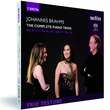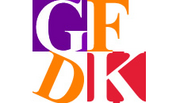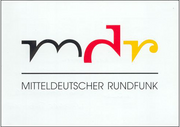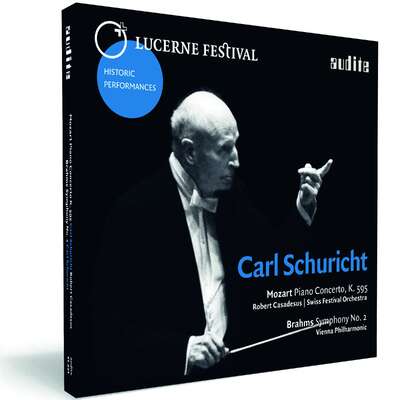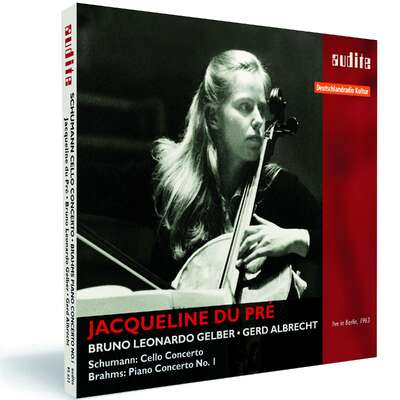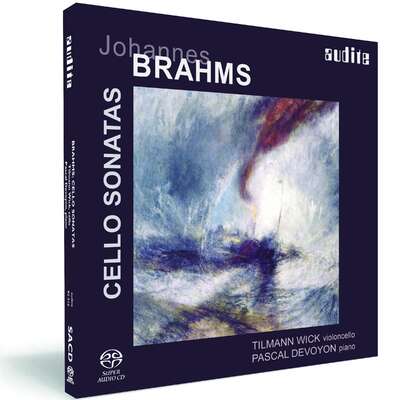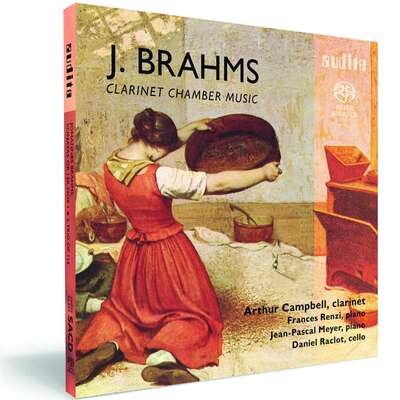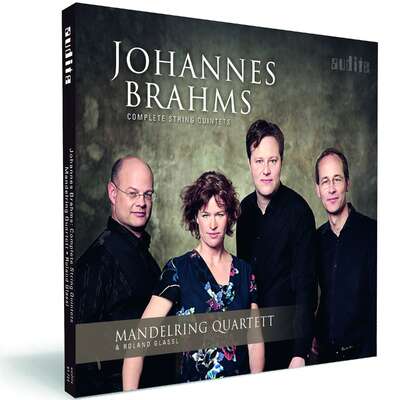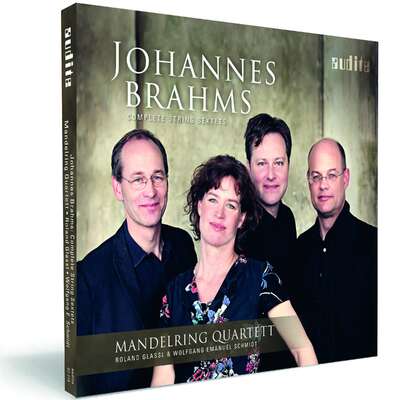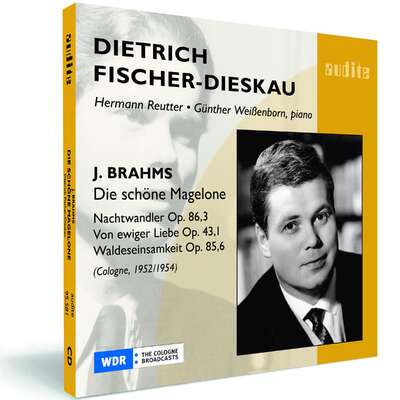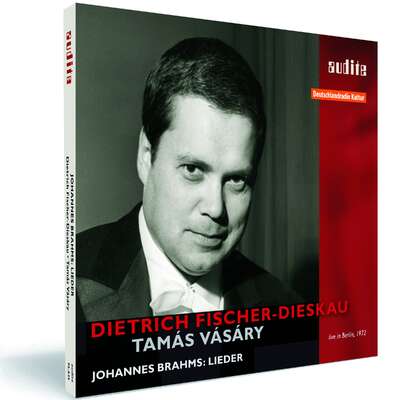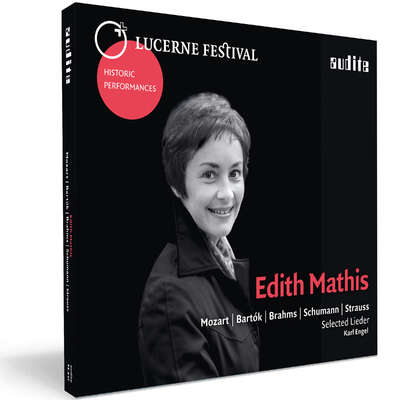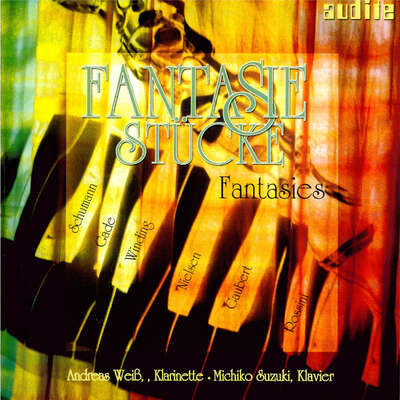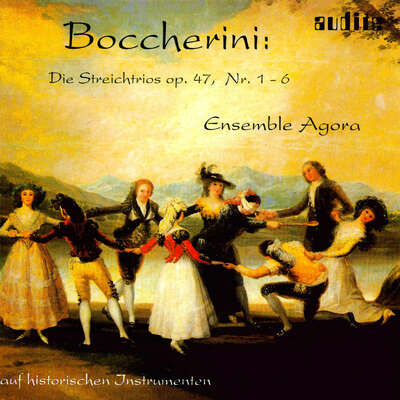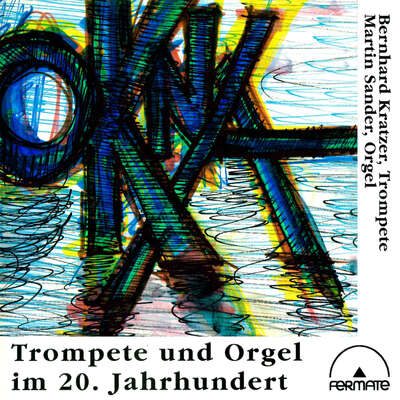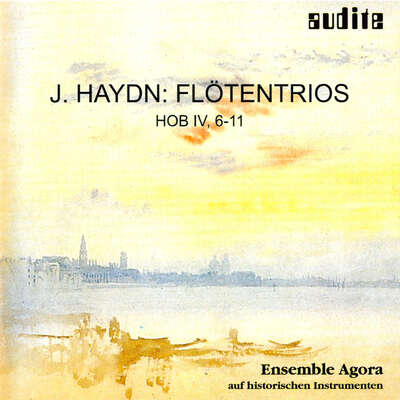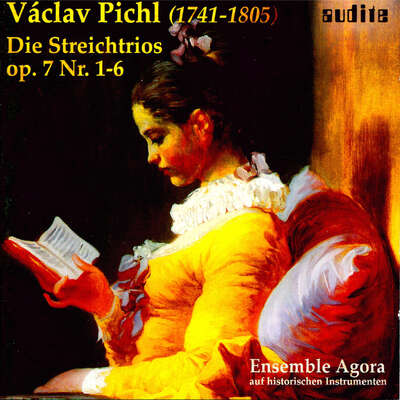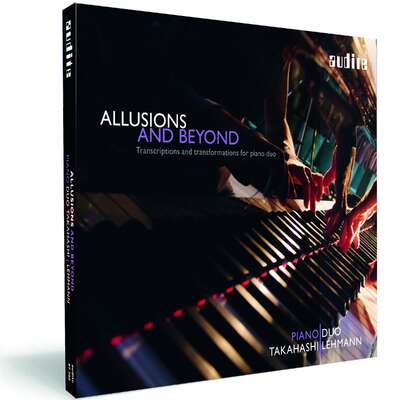
Das Trio Testore hat in seiner Gesamtaufnahme der Brahms Klaviertrios beide Fassungen des Trios H-Dur op. 8 eingespielt: Die Urfassung und die 25 Jahre später überarbeitete Version, die in weiten Teilen einer Neukomposition gleich kommt. Zur Zeit der Revision des ersten Trios schrieb Brahms zwei weitere, neue Trios gegensätzlicher Art. Zusammen ergibt sich ein beispielhafter Eindruck von Brahms’ kompositorischer Entwicklung. mehr
"Das Trio Testore spricht gleichermaßen ausdrucksstark die Sprache des verdichteten Alterswerks wie auch die des jungen Überschwangs, beherrscht motivische Arbeit wie auch die flächige Ausbreitung der Melodien, Melancholie sowie Sturm und Drang." (Ensemble - Magazin für Kammermusik)
Titelliste
Details
| Johannes Brahms: The Complete Piano Trios | |
| Artikelnummer: | 91.668 |
|---|---|
| EAN-Code: | 4022143916686 |
| Preisgruppe: | CV |
| Veröffentlichungsdatum: | 26. April 2013 |
| Spielzeit: | 139 min. |
Informationen
Das Trio Testore hat in seiner Gesamtaufnahme der Brahms Klaviertrios beide Fassungen des Trios H-Dur op. 8 eingespielt: Die Urfassung und die 35 Jahre später überarbeitete Version, die in weiten Teilen einer Neukomposition gleich kommt. Zur Zeit der Revision des ersten Trios schrieb Brahms zwei weitere, neue Trios gegensätzlicher Art. Die Musiker arbeiten durch überzeugende Tempowahl und plastische Gestaltung die großen Bögen, den „Atem" der Kompositionen heraus. Aus der Gesamtschau der Werke ergibt sich ein beispielhafter Eindruck von Brahms' kompositorischer Entwicklung.
Das Trio Testore wurde im Jahr 2000 von Franziska Pietsch (Violine), Hans-Christian Schweiker (Violoncello) und Hyun-Jung Kim-Schweiker (Klavier) gegründet. Das Ensemble hat sich auf nationalen und internationalen Konzertpodien einen Namen gemacht. Zum 10-jährigen Jubiläum rief das Trio Testore 2011 das jährlich stattfindende Kammermusikfestival Mai-Klassik ins Leben.
Besprechungen
Badische Zeitung | Samstag, 01. März 2014 | J.A. | 1. März 2014 CD: KLASSIK: Brahms als Tänzer
Von der renommierten Mailänder Geigenbauer-Dynastie stammt der Ensemblename: Das im Jahr 2000 gegründete Trio Testore präsentiert auf den beidenMehr lesen
Scherzo | marzo 2014 | Juan Garcìa-Rico | 1. März 2014 Versiones Ardorosas
Ardorosa, ardiente y también delicada, esponjosa, mimada y, en definitiva, bellisima versión.Mehr lesen
www.volksfreund.de
| 24. Februar 2014 | mö | 24. Februar 2014
Aufnahme von Brahms-Trio erlaubt Blick in die Komponistenwerkstatt
Brahms Klaviertrio Opus 8 in zwei Varianten – dieses musikalische Erlebnis vereint das Trio Testore auf zwei Tonträgern. Eine Einspielung auf höchstem Niveau.
Die Einspielung mit dem Trio Testore steht auf höchstem Niveau. [...] Auch aufnahmetechnisch ist die SACD exzellent.Mehr lesen
Fanfare | 30.10.2013 | Richard A. Kaplan | 30. Oktober 2013
We have Trio Testore's stunning new account of the Brahms trios, music-making that is vibrant and expressive.Mehr lesen
Crescendo Magazine | Le 20 octobre 2013 | François Mardirossian | 20. Oktober 2013 Les quatre trios pour piano et cordes de Brahms
Das Trio Testore (welches seinen Namen dem Erbauer der beiden Streichinstrumente verdankt) präsentiert hiermit eine ungekürzte, mehr als vollständige Fassung. Wegen der Interpretation der Trios behaupte ich mit Nachdruck, dass die vorliegende Aufnahme als eine der Besten Gesamteinspielungen dieses Genres bleiben wird.Mehr lesen
Fanfare | 17.10.2013 | Jerry Dubins | 17. Oktober 2013
I’ve wasted too much ink in these pages trashing the original 1854 version of Brahms’s B-Major Trio to go on about it again. I’m just relievedMehr lesen
This entry will be brief because the Brahms piano trios are very well represented on disc, and they’ve been exhaustively covered in numerous past reviews. The Trio Testore is new to me and nearly so, it seems, to records, though a single-disc Audite album, containing a performance of Shostakovich’s E-Minor Trio, op. 67, plus what is assumed to be the same performance of Brahms’s Piano Trio No. 2 that’s included in this two-disc set, is available as a download only.
So, being unfamiliar with the group, naturally, I checked out its official website. How’s this for publicity hype? At least since the publication of the complete recording of piano trios by Brahms (SACD Audite), which caused a sensation around the world, the TRIO TESTORE, known for the intensity and originality of its interpretations, has become a household name in the music world. Why yes, the ensemble’s Brahms trios made international headlines, Twitter was all a-tweet, and just yesterday the Trio Testore was the topic of conversation around countless dinner tables.
Despite the Italian name it has taken for itself after the Testore family of 18th-century string instrument makers the Trio Testore is of German pedigree. Violinist Franziska Pietsch hails from Berlin, studied with the famed Dorothy DeLay in New York, won a number of competitions, and has soloed with several renowned orchestras and conductors. She plays a 1751 Carlo Antonio Testore violin. Cellist Hans-Christian Schweiker currently calls Cologne home, has partnered with members of the Amadeus Quartet, and has concertized widely throughout Europe. He plays a 1711 Carlo Giuseppe Testore cello. The instruments are set up and strung to modern standards. Pianist Hyun-Jung Kim-Schweiker, presumably Hans-Christian’s wife, made her debut at 13 with the Royal Philharmonic of Pusan, then traveled to Germany, where she studied at the Cologne University of Music, and has since made an international career for herself.
I really wanted to love these performances, especially since this is the first and only complete survey of the Brahms trios I know of on SACD. The Storioni Trio of Amsterdam recorded the first and second trios for PentaTone, but thus far hasn’t followed through with the third.
Unfortunately, the Trio Testore’s interpretive approach left me feeling queasy. Great swells on notes, no doubt meant to dramatize their emotional significance, are followed by sudden ebbs, lending a feeling of waves rising and falling. Complementing the dynamic crests and troughs are the rhythmic surging and slackening that expand and contract the shapes of the phrases. Tempos are consistently on the slow side, and violinist Pietsch is of a mind that the shortest distance between two notes is a portamento. All of this, I’m sure, is carried out with the best of intentions; Brahms, after all, can’t be trusted to express his true emotions without serious intervention, not to mention a good deal of slippery slithering and sliding around.
If you judge the Trio Testore strictly on the merits of its technical execution, no criticism can be lodged. But there’s more to performing music than playing the notes in tune. I wouldn’t go quite so far as to say about the Trio Testore something I once…
Saarbrücker Zeitung | 14.10.2013 | uhu | 14. Oktober 2013 Ergreifend schön: Trio Testore spielt Brahms' Klaviertrios
Verdientermaßen hat sich das Trio Testore mit dieser Aufnahme der Klaviertrios von Brahms im Sturm in die vorderen internationalen Reihen gespielt. Vibratoreich, durchaus schwelgerisch, aber nicht ausufernd musizierend, lässt das Ensemble jene innere Glut schwelen, die dieser Musik gebürt – bis hin zu Momenten ergreifender Melancholie.Mehr lesen
La Muzik | Oktober 2013 | 1. Oktober 2013 Record Label Showdown
Chinesische Rezension siehe PDF!Mehr lesen
Musica | numero 250 - ottobre 2013 | Bernardo Pieri | 1. Oktober 2013
A questa ricca tradizione appartiene il Brahms del Trio Testore, solido, strutturalmente impeccabile, vario nei colori, riproduzione perfetta della scrupolosa tavolozza brahmsiana, calibratissimo nei tempi sempre giusti. Mehr lesen
Fono Forum | Oktober 2013 | Christoph Vratz | 1. Oktober 2013 Gewichtig, herb
Es bleibt eine Geschmacksfrage: Welches Trio ist das bessere, op. 8 oder op. 8? Johannes Brahms hat sein frühes H-Dur-Klaviertrio rund dreieinhalbMehr lesen
Kulimu | Jg. 39 (2013), Heft 2 | ts | 1. September 2013
Vorherrschend ist die Lust der Musiker an einer präzisen Klangformulierung, dessen Farbpalette kaum Wünsche offen lässt. Wo angebracht, ergänzt sich in der Interpretation Opulenz mit dem Bestreben nach sorgsam Austariertem und bringt in der Summe eine sehr respektable Einspielung dieser Meisterwerke der Triogattung.Mehr lesen
Fanfare | September 2013 | Richard A. Kaplan | 1. September 2013
Trio Testore—named for the family of 18th-Century instrument-makers who produced the violin and cello played by members Franziska Pietsch andMehr lesen
As I mentioned in a recent review (see Fanfare 36:5), the Trio in B Major, op. 8 has a unique history: upon its republication 35 years after the original version was completed, Brahms not so much revised as completely rewrote the piece. What’s more, he allowed the first version to remain in print—surprisingly, given his practice of destroying works that didn’t meet his exacting standards—so we can hear not only his first thoughts, but also exactly where the changes occur in the revision. It makes for a revealing study of an astoundingly disciplined musical mind; not only did he jettison pages of music, but in every case made exactly the right decision regarding what to change and what to allow to remain. The result is that following the sweeping opening theme, which is retained almost unchanged, the entire first movement is new, but in the Scherzo only the coda is altered; the Adagio gets a new middle section and loses a somewhat bizarre departure in mid-reprise; and, the last movement, like the first, is completely rewritten after the opening theme. The 1854 version is valuable not because it is intrinsically as good as the revision—it’s not even close—but because of what the comparison tells us about Brahms’s ability to retain what’s musically compelling and rethink what is not.
A quick personal anecdote, finally, about the B-Major: the first time I heard it live, I was struck by the link between the Scherzo and the Adagio—the high F over low B that ends the former and begins the latter—and was incredulous that I’d never noticed this connection before. Then I realized that this was where you turned over the LP.
To cut to the chase: this set is one of the most beautiful recordings of Brahms chamber music I’ve heard in a long time. After hearing any number of run-of-the-mill readings of various chamber works over the past weeks and months, it was clear as early as the first theme of the B-Major that this was going to be anything but a routine run-through. Phrasings are carefully and lovingly thought-out and intensely expressive; the musicians’ deep commitment shows in their unanimity of conception. In contrast with interpretations that sound as though on autopilot, these readings are consistently eventful without being arbitrary. Only the habit of slowing at cadences took some getting used to, but this helps the listener hear the musical structure. The balances between the strings and pianist Hyun-Jung Kim-Schweiker are perfect. Ensemble and intonation are spot-on. Exposition repeats in the two versions of op. 8 are taken. As for the recording, on the CD layer it’s as lifelike a chamber recording as I’ve heard; the multi-channel layer adds ambience without taking away from immediacy.
It should by now come as no surprise that this set is going directly onto my Want List. Urgently recommended!
American Record Guide | September 2013 | Paul L. Althouse | 1. September 2013
This release of the Brahms piano trios is enhanced by the inclusion of both versions of his Opus 8, a great work that (along with the Schubert B-flat)Mehr lesen
The Trio Testore gets its name from the family of violin makers. The violin here was made by Carlo Antonio Testore in 1751, the cello by Carlo Giuseppe Testore in 1711. The group’s violinist, Franziska Pietsch was most recently concertmaster of the Luxembourg Philharmonic, and both pianist Hyun-Jung Kim-Schweiker and cellist Hans-Christian Schweiker teach at the Hochschule für Musik und Tanz in Cologne; the group was founded in 2000.
From the first phrase of the Opus 8 I had a pretty good idea of what was coming. The theme, played by piano, is rendered with lots of subtle shadings and tugs at the rhythm, so I expected a warm, romantic reading. This approach is fine by me so long as the attention to little details does not sound episodic and thus obscure the big picture. And the music does not get caught up in sight-seeing; it has enough muscle and backbone to keep the movements coherent and interesting. I did notice on occasion, though, that while pianist Kim-Schweiker and cellist Schweiker seemed on the same expressive page, violinist Pietsch sometimes played in a less inflected style. At any rate this is very fine playing.
The last trio (C minor, Opus 101) has lots of fire and excitement, as does the scherzo from the second trio (C major, Opus 87) The slow movement from Opus 8, one of the loveliest in all of Brahms, is beautifully done, but I would appreciate a more sympathetic violinist in a few spots.
Bottom line? In recent years I’ve been drawn back to the Borodin Trio: deliberate tempos, depth and complexity in their interpretations. The Trio Testore is more flowing and a little less dark in sound. I guess I like the Testore a bit better, and the inclusion of the early Opus 8 makes this a winner.
Pizzicato | N° 235 - 9/2013 | ge | 1. September 2013 Brahms reloaded
Warum bloß hat Johannes Brahms sein 1. Klaviertrio einer Neubearbeitung unterzogen? Das Trio Testore liefert uns die Antwort in derMehr lesen
Buxtehuder Tageblatt
| B 27 - Nr. 173 (Sonnabend, 27. Juli 2013) | Jürgen Gahre | 27. Juli 2013
Die Highlights auf einen Blick
Von Giuseppe Verdis „Il Corsaro“ bis zu den „Biographischen Notizen über Ludwig van Beethoven“
Die Streicher des Trio Testore haben einen wundervoll homogenen, dunkelsamtenen Klang, [...] so leidenschaftlich und klangschön vorgetragenMehr lesen
Ensemble - Magazin für Kammermusik | 3-2013 Juni/Juli | Isabel Fedrizzi | 1. Juni 2013 Ein Muss im CD-Regal
Doch schon ein erstes Lauschen eröffnet, dass das Trio Testore eine unbedingt hörenswerte Interpretation dieser vielgespielten Werke bietet: sehr emotional, ohne abgehoben zu sein, mit betont feinsinnigen dynamischen Abstufungen und – das Lob gilt insbesondere der Pianistin Hyun-Jung Kim-Schweiker – mit so vielen kleinen, feinen Differenzierungen, dass sich bei jedem Hören wieder neue Facetten erschließen.Mehr lesen
WDR 3 | WDR 3 TonArt, 22.05.2013: 15.05 - 17.45 Uhr | Jörg Lengersdorf | 22. Mai 2013 Trio Testore spielt Brahms Klaviertrios
Das Testore Trio hat für eine neue CD Box alle Klaviertrios von JohannesMehr lesen
klassik.com
| 16.05.2013 | Dr. Stefan Drees | 16. Mai 2013 | Quelle: http://magazin.k...
Mit großem Gespür
Brahms, Johannes - Klaviertrios op. 8, 87 & 101
Mit großem Gespür für die dramaturgische Wirkung entsprechender Passagen erklingen etwa die vom Komponisten im Nachhinein eliminierten Zitate aus Liedern Franz Schuberts aus dem Kontext der sie umschließenden Brahms’schen Musik hervor, klanglich als Enklaven des stillen Eingedenkens markiert, die für den Augenblick ihres Erklingen die Zeit aufzuheben scheinen. Und besonders hier wird die CD zu einem großen, empfehlenswerten Hörabenteuer.Mehr lesen
Gesellschaft Freunde der Künste | 03.05.2013 | GFDK | 3. Mai 2013 Musik/Festival: Einzigartige Momente mit dem Trio Testore erleben - Live beim Kammermusikfestival Mai-Klassik & auf CD
Das Trio Testore hat in seiner Gesamtaufnahme der Brahms Klaviertrios beide Fassungen des Trios H-Dur op. 8 eingespielt: Die Urfassung und die 35Mehr lesen
Zur Zeit der Revision des ersten Trios schrieb Brahms zwei weitere, neue Trios gegensätzlicher Art. Die Musiker arbeiten durch überzeugende Tempowahl und plastische Gestaltung die großen Bögen, den „Atem" der Kompositionen heraus. Aus der Gesamtschau der Werke ergibt sich ein beispielhafter Eindruck von Brahms' kompositorischer Entwicklung.
Wir lieben klassische Musik
Das Trio Testore wurde im Jahr 2000 von Franziska Pietsch (Violine), Hans-Christian Schweiker (Violoncello) und Hyun-Jung Kim-Schweiker (Klavier) gegründet. Das Ensemble hat sich auf nationalen und internationalen Konzertpodien einen Namen gemacht. Zum 10-jährigen Jubiläum rief das Trio Testore 2011 das jährlich stattfindende Kammermusikfestival Mai-Klassik ins Leben.
International Record Review | May 2013 | Nigel Simeone | 1. Mai 2013
It's good to have two new sets of the Brahms Piano Trios, and though both are described as 'The Complete Piano Trios', the contents of each one isMehr lesen
Let me try to summarize the qualities of the two new sets. The first thing to say about the Trio Testore set is that it has been exceptionally well recorded by Audite: a really natural sound caught in an ideal acoustic. But while this ensemble's collective sonority is often beautiful, there is a tendency to micro-manage the expressiveness of the music: this is highly nuanced playing and, while flexibility is certainly an admirable trait in Brahms performances, I find these players prone to over-shape phrases: they are apparently reluctant to let the music speak for itself. The Trio Testore is also inclined to take its time in places: the first movement of the B major Trio – especially in its original version – is arguably a little too expansive for its own good in this performance. Having said that, there is much to enjoy in the playing: it's heartfelt, sophisticated, affectionate and polished. The snag – to my ears at least – is that it all feels a little too self-conscious, and this can rob the music of some of its tensile strength in, for example, the first movement of the C major Trio. Collectors looking for new recordings of these works might respond more positively than I did to the Trio Testore's elegantly sculpted approach, so I'd certainly suggest having a listen: this is an imaginative ensemble captured in superb sound.
The Smetana Trio is a different matter. This is a very fine set marked by passionate, big-hearted and exciting playing. It has none of what – to me – is the rather fussy overexpressiveness of the Trio Testore, but it is red-blooded and eloquent. Among other things, I like the quite swift 'Andante con moto' second movement of the C major Trio (more than a minute quicker than the Trio Testore and a little swifter than the Goulds) and all the way through I greatly enjoyed the controlled energy and warmth of these performances. I know I'll return to them many times in the future: these players have a wonderful sense of musical line and a collective sense of musical direction that is powerful and engrossing.
So is either of these new releases a Brahms trio cycle to own? While I've my doubts about the Trio Testore, I'd say a most definite 'yes' in the case of the Smetana Trio: there is spontaneous engagement with the music and such a heroic sweep to the playing. Moreover, the clarinet and horn soloists are extremely fine as well (Ludmila Peterková's clarinet playing in the Op. 114 Trio is absolutely magical), and all five performances are of very high quality. The recording is a little boxy compared with Audite's sound but it's eminently acceptable and the musical rewards are compelling.
The Smetana Trio is thus at or near the top of my short-list of relatively recent recordings of these glorious works, but so, too, are the discs by the Gould Piano Trio – available in a three-disc set at a special price that includes both incarnations of Op. 8 and the A major Trio as well as all the works in the Supraphon set. Comparing the performances of these two ensembles makes me very glad to have both: the Smetana Trio is sometimes more muscular, a little more grainy and – unsurprisingly – more Central European in its approach, while the Goulds have a transparency and litheness that are vastly appealing. I’ve not discussed classic accounts by the likes of the Beaux Arts Trio (Decca), the Stern-Rose-lstomin Trio (Sony) or the Trio di Trieste (DG), all of which belong in a comprehensive collection of Brahms chamber music on record. So, too, do the younger generation of Brahmsians, now so impressively represented by the Gould Piano Trio and the Smetana Trio.
http://theclassicalreviewer.blogspot.de | Tuesday, 30 April 2013 | 30. April 2013 An irresistible new release from Audite featuring the Trio Testore in recordings of Brahms complete Piano Trios that include the original version of his Op. 8
It is the Trio Testore that made me hear afresh the three main trios in performances where they play their hearts out. They have been given a sensationally good recording, so detailed and natural. With the Testores including a recording of the original version of Op.8 this new release is irresistible.Mehr lesen
Mitteldeutscher Rundfunk | MDR Kulturradio, Take 5 - 08. April 2013 | 8. April 2013
Glücklicherweise ist das Trio Testore ein Ensemble, das wie ein Organismus zu agieren vermag. Das ist gerade bei so emotional aufgeladener Musik keineswegs eine leichte Übung. <br /> [Sie] kultivieren hier einen Trioklang, der selten geworden ist: Tiefempfunden und auf einer Welle schwimmend, mit gemeinsamem Atem, gerade auch in den langsamen Sätzen. Kammermusik der wirklich erlesenen Art.Mehr lesen
[Sie] kultivieren hier einen Trioklang, der selten geworden ist: Tiefempfunden und auf einer Welle schwimmend, mit gemeinsamem Atem, gerade auch in den langsamen Sätzen. Kammermusik der wirklich erlesenen Art.
Record Geijutsu | April 2013 | 1. April 2013
japanische Rezension siehe PDFMehr lesen
Westdeutsche Allgemeine Zeitung | Donnerstag, 20. Februar 2014 | Martin Schrahn
Brahms-Trios – so sanft wie aufbegehrend
Das Trio Testore legt eine Neuaufnahme der Werke vor, mit denen der Meister – wie er es so oft tat – kritisch umging
Das Trio Testore hat die drei (vier) Werke eingespielt, alles Brüchige, Schroffe betonend, ohne die sanfte, intensive, aufbegehrende Lyrik des Romantikers außer Acht zu lassen.Mehr lesen
